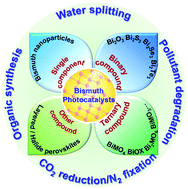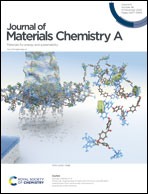Bismuth-based photocatalysts for solar energy conversion
Abstract
Semiconductor photocatalysis is a promising technology for solar fuel production and environmental remediation. However, the solar energy conversion efficiency is far from satisfactory, which restricts its practical application. The development of semiconductor materials is crucial to promote the solar energy conversion efficiency in photocatalytic systems. Owing to the Bi 6s and O 2p hybrid orbitals in the valence band, most of the bismuth-based photocatalysts possess a narrow bandgap for visible light utilization, which has attracted increasing attention. In the past few years, a rich family of bismuth-based photocatalysts have been developed, which are yet to be comprehensively reviewed. In this review article, the recent progress of bismuth-based nanomaterials for photocatalysis including pollutant degradation, water splitting, CO2 reduction, N2 fixation, and organic synthesis is critically reviewed. In particular, promising strategies for promoting the photocatalytic activity of each material system is discussed and the key challenges and prospects of bismuth-based materials for photocatalysis are presented, which are believed to promote the development of this important research field.



 Please wait while we load your content...
Please wait while we load your content...